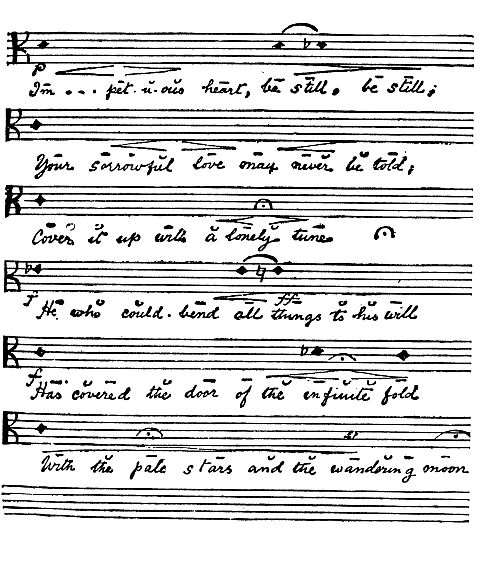
… The purpose of scansion is to enhance the reader’s sensitivity to the ways in which rhythmic elements in a poem convey meaning. Scansion, the analysis and visual representation of a poem’s metrical pattern. An enjambed line typically lacks punctuation at its line break, so the reader is carried smoothly and swiftly-without interruption-to the next line of the poem.Īdvertisement What is scansion used to analyze? What is an Enjambed line?Įnjambment, from the French meaning “a striding over,” is a poetic term for the continuation of a sentence or phrase from one line of poetry to the next. Examples of trochaic words include “ garden” and “highway.” William Blake opens “The Tyger” with a predominantly trochaic line: “Tyger! Tyger! Burning bright.” Edgar Allan Poe’s “The Raven” is mainly trochaic.

Pentameter: contains five metrical feet.Ī metrical foot consisting of an accented syllable followed by an unaccented syllable.Tetrameter: contains four metrical feet.Trimeter: contains three metrical feet.The type of meter is determined by the number of feet in a line: Examples of Sestet: Elizabeth Barrett Browning’s “How do I Love Thee” is an example of an Italian sonnet, with a sestet. … So, the rhyme scheme of the sestet in an Italian sonnet is CDECDE. Sestet is the term for a section of a sonnet that is six lines in length. Rhyme is nice in a riddle-poem, but strong rhythm (what poets call good scansion ) is better.It takes no account of the quantity of syllables the scansion depends on accent, and there is always an accent on the last syllable but one.

… “Sky” and “high” are examples of perfect rhymes. “Worm” and “swarm” are examples of slant rhymes. Most slant rhymes are formed by words with identical consonants and different vowels, or vice versa. What is an example of slant rhyme?Ī slant rhyme is a type of rhyme with words that have similar, but not identical sounds. ‘Mark’ can be taken to mean both ‘notice’ and ‘annotate’, the latter often done with a u for an unstressed syllable and a slash, /, for a stressed one. Scansion is the process of marking the stresses in a poem, and working out the metre from the distribution of stresses. Scansion marks the metrical pattern of a poem by breaking each line of verse up into feet and highlighting the accented and unaccented syllables. Scansion also involves the classification of a poem’s stanza, structure, and rhyme scheme. The analysis of the metrical patterns of a poem by organizing its lines into feet of stressed and unstressed syllables and showing the major pauses, if any. Mark the stressed syllables first, and then go back and mark the unstressed syllables.As you read the poem aloud, try tapping your foot or pounding your hand on a desk when you hear the accented syllables.Is the meter for the line Hickory Dickory Dock?.How do we do scansion and what is the importance of doing it?.What is scanning in communication skills?.Despayre in Praise of Suicide (Faerie Queene 1.9.To a Friend Whose Work Has Come to Nothing.The Red Knight Topples (Idylls of the King, X.454-76).Rhyme for a Child Viewing a Naked Venus in a Painting of “The Judgment of Paris”.Prospero Explains (The Tempest IV.i.148-63).Life of Life (Prometheus Unbound II.v.48-71).Lear on the Heath (King Lear III.ii.1-9).Juliet’s Soliloquy (Romeo and Juliet III.ii.1-25).Epigram Engraved on the Collar of a Dog Which I Gave to his Royal Highness.Dulness’ Apocalypse (The Dunciad 4.627-56).Despayre in Praise of Suicide (Faerie Queene 1.9.39-40).Above the Raven’s Nest (The Prelude, I.326-39).
But cheer up! The listening that this stage involves is the very skill 4B4V is designed to help you hone. That’s because at this point you’re in a zone just past the rules, where odd things can and will happen. This two-way double-check can be hard work at first, and is likely to entail some frustrating practice. That is, read your scansion out loud and check it by ear against your provisional reading, negotiating between the two as needed, and adjusting your scansion marks to reflect any changes of mind. Perform the score you just wrote, by playing it back to yourself. These will be unstressed syllables within polysyllabic words and most (but not always all!) of the following monosyllables: articles, prepositions, auxiliary verbs, conjunctions, relative pronouns.Ĥ. These will be most (but not always all!) of the following: nouns, main verbs, adjectives and adverbs, interjections, interrogative pronouns and rhymes.ģ. Locate any polysyllabic words and mark their stresses, which you’ll find given in a good dictionary if you can’t readily tell on your own.Ģ.


 0 kommentar(er)
0 kommentar(er)
